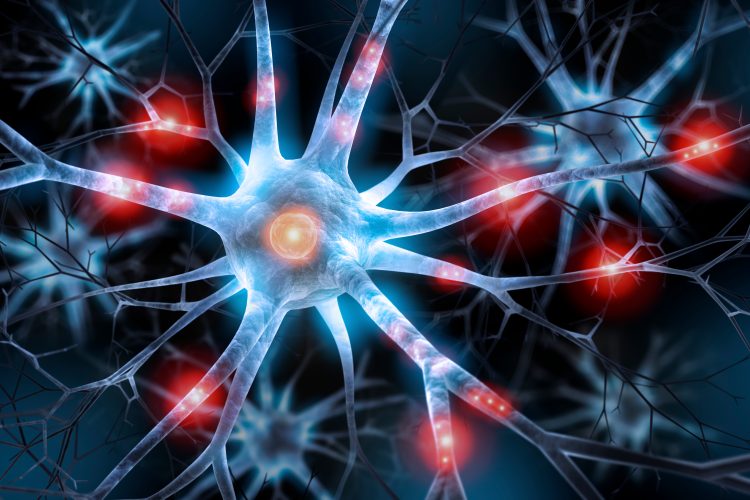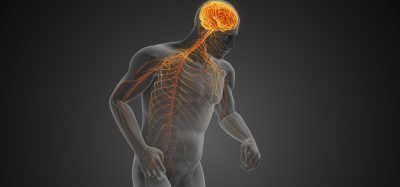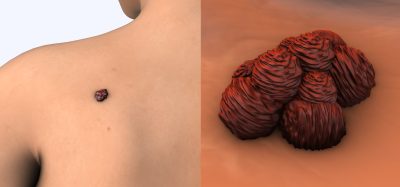The future of CNS drug development: signs of real progress
Posted: 21 July 2025 | Dr Xiaoxia Li MD (Executive Technical Director of Toxicology at WuXi AppTec) | No comments yet
New therapeutic approaches are emerging for CNS disorders – but can they overcome the toughest barriers in drug development? Find out what is driving progress and what still stands in the way.


Hundreds of life-altering conditions attack the central nervous system (CNS). Disorders such as Alzheimer’s disease, primary glioblastoma and amyotrophic lateral sclerosis (ALS) all affect the CNS and are considered fatal, while more common conditions, including depression, strokes and epilepsy, require long-term treatments.
According to the World Health Organization (WHO), neurological conditions are now the number one cause of ill health and disability across the globe,1 highlighting the desperate need for new treatments and solutions in an area of medicine that is notoriously difficult to address.
Thanks to technological breakthroughs, sponsors are developing more novel therapeutics for the CNS than ever – some targeting the most lethal conditions. The global market for CNS therapeutics was worth an estimated $144.3 million last year and is expected to grow to $410 million by 2035.2 A raft of emerging therapeutic modalities sits at the centre of this boom, spanning advanced biologics, engineered platforms and next-generation small molecules.
Automation now plays a central role in discovery. From self-driving laboratories to real-time bioprocessing
This report explores how data-driven systems improve reproducibility, speed decisions and make scale achievable across research and development.
Inside the report:
- Advance discovery through miniaturised, high-throughput and animal-free systems
- Integrate AI, robotics and analytics to speed decision-making
- Streamline cell therapy and bioprocess QC for scale and compliance
- And more!
This report unlocks perspectives that show how automation is changing the scale and quality of discovery. The result is faster insight, stronger data and better science – access your free copy today
However, the advanced nature of the drugs being developed has brought new challenges.
Current challenges in CNS drug development
Drug development for the CNS is particularly challenging and researchers face several hurdles to producing effective and safe treatments, many of which are unique to the CNS.
Blood–brain barrier
The CNS is protected by its own security system: the blood–brain barrier (BBB). The BBB acts as a gatekeeper, controlling what enters and exits the brain and ensuring harmful substances are kept out. This protective barrier prevents more than 98 percent of small-molecule drugs and all macromolecular therapeutics3 from accessing the brain. The tightness of the BBB only allows passive diffusion of lipid-soluble drugs at a molecular weight lower than 400–600 Da.4 Inefficient delivery of drugs to the brain results in low efficacy and increased side effects, due to accumulation in other organs and tissues.
Disease heterogeneity
Many CNS disorders, including Alzheimer’s and multiple sclerosis, have multiple root causes. Consequently, patients suffering from these conditions generally require more personalised treatments, complicating drug development. This heterogeneity also affects the ability to produce consistent results in clinical trials, as study groups sharing the same symptoms and disease progressions are hard to find.
Complex pathophysiology
The CNS is a notoriously complex network of structures and functions within the brain and spinal cord, orchestrating diverse functions. On a cellular level, various types of neurons, glial cells and specialised cells interact in elaborate ways. Navigating the system’s complexities requires a deep understanding of its multidimensional nature. Researchers face significant challenges developing drugs that target specific pathways without causing issues elsewhere in the CNS.
Biomarker scarcity
A dearth of reliable biomarkers impacts early diagnosis, treatment monitoring and drug development efforts in the CNS. This absence of objective measures contributes to the variability in patient response to treatments, complicating efforts to produce standardised therapies.
High failure rates
Many incredible advances have been made in neuroscience over the past decade, but there remains a lack of understanding of the precise mechanisms of many CNS disorders. This makes it difficult to identify relevant and effective treatments. The causes and effects of conditions such as autism and schizophrenia, for example, are still unknown. These gaps in knowledge can lead to a trial-and-error approach to clinical trials, which can result in high failure rates.
Regulatory and testing complications
The complex nature of CNS therapeutics makes regulatory approval potentially time consuming, expensive and challenging. The diversity of symptoms experienced by patients and variable disease progression make regulatory evaluations more difficult. Moreover, regulatory pathways also change considerably based on the type of therapy – and guidance is sparse.
The complexities of crossing the BBB and the pathophysiology of the CNS make testing particularly challenging. CNS drug development contains several modalities and is very broad, meaning developers must rely on expert advice to steer them down the correct regulatory and testing routes.
Molecular engineering approaches
Most CNS disorders involve abnormal gene expression, and molecular engineering is one of the most powerful tools to address this issue. Molecularly targeted platforms can enable extended dosing intervals and enhance druggability through precise biological engagement.
Antisense oligonucleotides (ASOs) represent some of the most promising therapies for addressing CNS disorders as they can alter gene expressions regardless of the proteins encoded by their target. This enables them to target disease-causing genes without affecting other cellular processes. Two ASOs have been approved to treat patients with spinal muscular atrophy (SMA) and familial amyotrophic lateral sclerosis (ALS). However, ASOs cannot cross blood-CNS barriers so are often delivered intrathecally.
Due to off-target effects, tissue accumulation and immune responses, ASOs face significant challenges, especially for preclinical safety assessments. Their development requires complex testing strategies. Monitoring biomarkers, including liver toxicity, kidney toxicity, inflammation, coagulation and complement activation, is crucial to identifying potential risks as early as possible.
Delivery methods are also key, with viral vector-based systems being the most common. Viral vectors use a virus’s blueprint to deliver genetic material into cells. The two most used vectors are Adeno-associated viruses (AAVs), which boast low immunogenicity and long-term gene expression, and lentiviruses, which offer stable gene transfer. Researchers must carefully select a serotype for AAVs. For CNS disorders, serotypes such as AAV9 are useful for crossing the blood–brain barrier, while others can efficiently transduce neurons or glial cells and reduce off-target effects in other tissues.
The route of administration remains a critical consideration for CNS-targeted therapeutics, especially those relying on engineered vectors or biologically active components.
Biologically derived therapies
Therapeutic approaches leveraging biologically derived components offer potential to repair or modulate dysfunctional neural systems. However, they face challenges in surviving the hostile CNS environment, integrating into existing neural circuits and avoiding immune responses; but they are rich in potential.
Stem cells can uniquely differentiate into specialised cell types, self-renew and expand in culture, and potentially integrate into damaged neural circuits. Stem-cell therapies are already bringing hope to patients suffering from diseases such as Parkinson’s, epilepsy and many other CNS-based conditions.
Again, testing and safety assessments in this field require careful consideration. These therapies involve living cells that can migrate and interact with the brain, so testing must establish cell behaviour, immune responses and functional integration, often over a long period.
Developers and sponsors working on biologically derived therapies in the US can utilise the Regenerative Medicine Advanced Therapy (RMAT) designation, which regulators grant to promising regenerative therapies. To qualify for this designation, a drug candidate must meet the definition of regenerative medicine therapy, intend to treat or cure a serious condition, and be supported by preliminary clinical evidence that indicates it can address the clinical need. Candidates with the RMAT designation benefit from expedited development and review and more frequent interaction with the regulatory agencies.
Novel small-molecule approaches
Small-molecule drugs play a large part in treating CNS disorders as they can penetrate the BBB and have high oral bioavailability. Some of today’s most used drugs are small molecules, but a new generation of treatments is under development that can potentially be effective in CNS disorders.
New mechanisms of action are steadily emerging, including drugs like Cobenfy, a new medication for schizophrenia that targets muscarinic receptors in the brain. Researchers are also developing anti-aggregation therapies for protein misfolding disorders, aiming to slow disease progression in CNS disorders, rather than manage symptoms.
Proteolysis-targeting chimaeras (PROTACs) are another new small-molecule drug type with significant potential in treating CNS-related conditions. PROTACs are larger than traditional small-molecule inhibitors, so challenges arise in permeating the BBB, but they can target proteins previously considered ‘undruggable’.
Targeted protein degraders can easily cause off-target toxicity. To mitigate this risk, developers can prioritise a list of proteins that may harm vital organs when degraded. This can help establish a threshold for these proteins in an in vitro system and screen degraders early in development.
Future outlook for CNS treatments
Researchers are making breakthroughs in this area at an increasingly rapid pace. Several new technologies and tools promise to move therapies forwards even faster. Advanced drug delivery systems involving nanotechnology-based approaches are building on the work that introduced the lipid-based nanoparticle (LNP) vehicle. The use of ultrasound and other techniques may also make it easier to get drugs past the BBB.
Precision medicine is also being used, including profiling for targeted therapy selection, patient stratification strategies and personalised dosing regimes. Although challenges remain, other technologies in development may address them.
For example, neuroimaging and biomarker identification advancements can significantly enhance drug development and personalised treatments. Researchers are developing new ways to monitor real-time therapeutic effects, patient-specific response predictors and digital biomarkers for early intervention.
Machine learning technology may also help target identification and validation in the future, assist with predictive models for clinical outcomes and develop treatment algorithms.
In silico modelling offers great promise in testing but may take years to become a reality. This technology could offer a better model for BBB penetration prediction and identify risks far earlier in the development process.
A final word on advancing treatment for CNS disorders
Emerging CNS therapeutic modalities offer great hope to sponsors, developers, healthcare providers and patients. CNS disorders are some of the most damaging and debilitating conditions to endure, and many are incurable. If researchers can address critical challenges, such as delivery methods, regulatory hurdles and effective testing, a new wave of therapies can change the outcomes of many destructive diseases. Next-generation therapeutic modalities, together with the rise of personalised medicine, can potentially transform the lives of millions of individuals affected by CNS disorders.
To reach this potential, academia, industry and regulatory bodies must collaborate to ensure treatments reach patients quickly and safely.
References
- Over 1 in 3 people affected by neurological conditions, the leading cause of illness and disability worldwide – World Health Organisation. https://www.who.int/news/item/14-03-2024-over-1-in-3-people-affected-by-neurological-conditions–the-leading-cause-of-illness-and-disability-worldwide
- Central Nervous System (CNS) Therapeutics Market Forecast (2025-2035) by Disease, Drug Class, Distribution Channel and Region – Erevna Healthcare.
- Pandit R, Chen L, Götz J. The blood-brain barrier: Physiology and strategies for drug delivery. Adv Drug Deliv Rev. 2020;165-166:1-14. doi: 10.1016/j.addr.2019.11.009. Epub 2019 Nov 29. PMID: 31790711.
- Wu D, Chen Q, Chen X, et al. The blood–brain barrier: Structure, regulation and drug delivery. Sig Transduct Target Ther 8, 217 (2023). https://doi.org/10.1038/s41392-023-01481-w
Meet the author
Xiaoxia Li, MD, PhD, Executive Technical Director, Toxicology, WuXi AppTec


Dr Xiaoxia Li is Executive Technical Director of Toxicology at WuXi AppTec with more than 22 years of experience in preclinical drug development. A board-certified toxicologist, she specialises in designing and managing nonclinical programmes across various modalities, including toxicology, pharmacokinetics, ADME and safety pharmacology. Her expertise spans CRO oversight, regulatory strategy and CTD-compliant submissions for INDs and NDAs. Prior to WuXi AppTec, Dr Li held scientific leadership roles in CROs and pharmaceutical companies in Canada and Japan. She holds a PhD in pharmacology from Japan, and an MD and MSc from China.
Related topics
Artificial Intelligence, Biologics, Biomarkers, Cell Therapy, Central Nervous System (CNS), Clinical Trials, Drug Delivery, Drug Discovery, Drug Discovery Processes, Gene Therapy, Imaging, In Vivo, Machine learning, Neurosciences, Precision Medicine, Regenerative Medicine, Screening, Small molecule, Stem Cells, Targets, Therapeutics, Translational Science, Viral vectors
Related conditions
Alzheimer’s disease, Amyotrophic Lateral Sclerosis (ALS), Primary glioblastoma
Related organisations
WuXi AppTec








